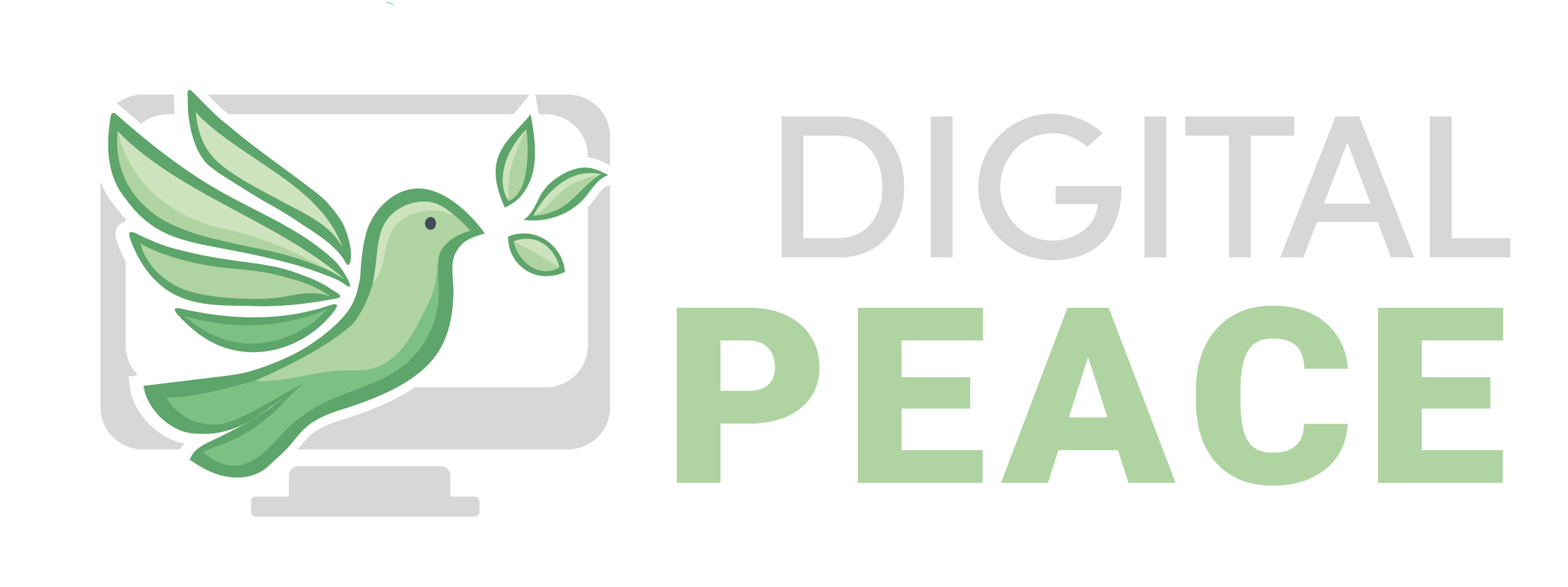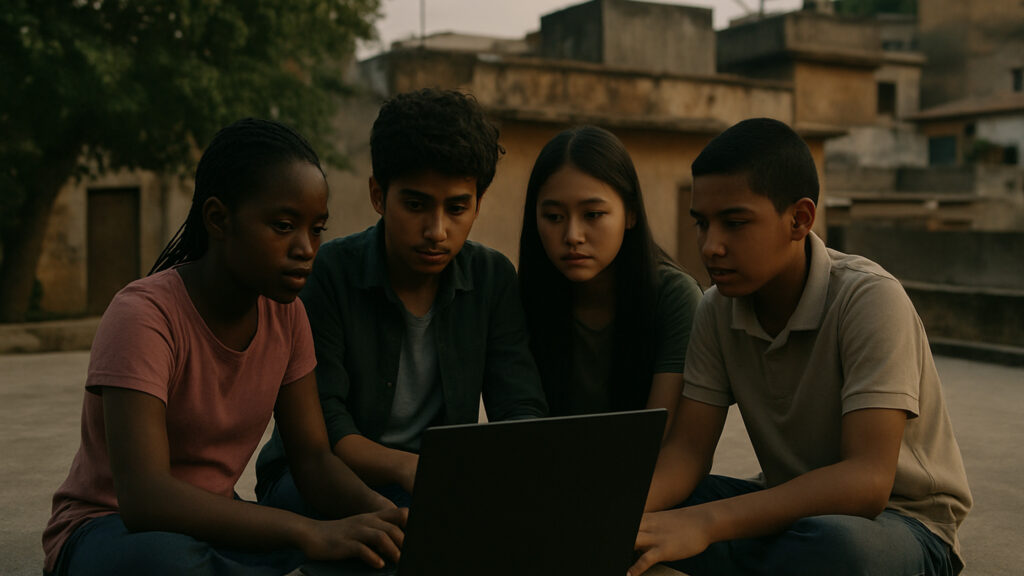We are writing the year 2010. A 26-year-old street vendor named Mohamed Bouazizi doused himself in paint thinner and struck a match. His act of protest soon sparked a revolution, within hours, grainy cell phone videos spread like wildfire on Facebook and Twitter. Within weeks, a dictator who had ruled for 23 years was fleeing into exile. Within months, the phrase “Arab Spring” had entered the global lexicon, and Silicon Valley’s utopian dreams about technology democratizing the world seemed to be manifesting in real time.
Remember how back then everybody praised social media for its peacebuilding potential?
The internet seemed to offer new power to the people globally. In Egypt, Tunisia, and beyond, topics once banned from public discourse suddenly appeared in Facebook posts and Twitter threads. Protesters coordinated in real-time, without party structures or centralised leadership.
It was chaotic, passionate, and for one brief, shining moment: full of radical hope.
In today’s information ecosystem, it seems almost inconceivable that social media was once hailed as an instrument of peace and democracy. Currently, we’re witnessing its near-total inversion. Yet the platforms’ original promise and their present-day exploitation are deeply intertwined.
Today’s information warfare is in many ways a direct response to that democratic potential. Authoritarian regimes watched in real-time as social media toppled their allies, and they began developing countermeasures.
The Gerasimov Doctrine, widely cited as foundational to Russian hybrid warfare strategies, was developed in direct reaction to events like the Arab Spring. When censorship was bypassed through networked protest, authoritarian actors evolved their approach: misinformation became the new censorship. Rather than blocking content, the aim was to pollute the information environment with so much noise and contradiction that truth itself became destabilised.
And here we are back in 2025, when social media is increasingly described as the most important tool in modern information warfare and one of the greatest threats to democracy itself. Digital tools have not only been commercialised, they’ve been militarised. War influencing has become the dominant paradigm: the strategic use of digital platforms to polarize, dehumanize opponents, and escalate conflicts.
Given this complex landscape where the line between offense and defense – between war and peace – blurs, the question becomes: How do we move forward? How do we navigate information warfare without becoming warriors ourselves? The answer may lie in an entirely different approach to digital influence.
In this article, we explore the concept of Peace Influencing: the strategic use of digital communication to counter polarisation, humanise all sides of a conflict, and promote dialogue in an age of algorithmic warfare. Drawing on the foundational work of Johan Galtung and Jake Lynch, who introduced the Peace Journalism framework (Lynch & Galtung, 2010), we’ll examine how their ideas translate into the influencer age.
Understanding Peace Journalism: The Foundation for Digital Peace
Norwegian sociologist Johan Galtung, often credited as one of the founders of peace and conflict studies, proposed a radically different way of reporting on conflict. Instead of amplifying violence, he called for journalism that actively supports peace.
In his Peace Journalism model (Galtung, 2003; Lynch & Galtung, 2010), he distinguishes between war journalism and peace journalism:
- War journalism tends to be reactive, focused on violence, zero-sum narratives, and “us vs. them” framings. It personalises the conflict, dehumanises the other side, and often presents peace efforts as naïve or irrelevant.
- Peace journalism, by contrast, seeks to humanise all parties, explain underlying causes, and highlight peaceful solutions. It focuses on structure, context, and voice, not just on winners and losers.
Crucially, peace journalism is not neutral, but deliberately constructive. It recognises that media can either escalate conflict or become a tool for dialogue, empathy, and transformation.
From Peace Journalism to Digital Peace Influencing: War and Peace in Social Media Spaces
While Galtung’s framework was developed for traditional journalism, the rise of social media has fundamentally altered how information spreads and how public opinion is shaped. Today, influence campaigns have become the primary battleground for hearts and minds, with millions of users globally participating in what Patrikarakos (2017) calls “virtual mass enlistment” in discourse on prevailing conflicts.
This shift demands an evolution of Galtung’s concepts. Building on his foundational work, we can identify two distinct approaches to digital influence that mirror his journalism framework: War Influencing and Peace Influencing.
War Influencing: Digital Polarization Strategies
War Influencing employs sophisticated multimedia elements and social media strategies to craft narratives that sway public opinion towards supporting or continuing conflict through force. At its heart lies the superficial portrayal of conflicts as zero-sum games, where narratives are simplified into stark divisions between good and evil. This binary opposition is designed to polarise audiences, casting the influencer’s side as virtuous while demonising the opposition (Lynch & Galtung, 2010).
War influencing strategically emphasises “their violence” and “our suffering,” creating imbalanced narratives that justify force and rally support. These narratives are tightly framed within closed temporal and spatial boundaries, often omitting broader historical contexts or future implications. The approach is predominantly elite-oriented, prioritising perspectives of those in power while marginalising affected populations.
Crucially, war influencing leverages social media algorithms by adapting to existing trends, challenges, music trends, memes in order to increase reach and engagement. It favours emotionally charged, provocative content designed to stir public emotions, while opposing viewpoints are discredited through harassment campaigns. Advanced technologies like AI and deepfakes enable massive scaling of propaganda efforts, while neurocognitive tactics exploit personal data and emotional vulnerabilities to nudge individuals towards divisive attitudes.
Peace Influencing: Digital De-escalation and Dialogue
Peace Influencing, conversely, uses digital platforms’ communicative power to foster understanding, dialogue, and reconciliation. By creating relatable and engaging content, this approach highlights conflicts’ historical complexities, human stories behind headlines, and potential pathways to peace. Peace influencers prioritise accurate information and transparency, working to demystify conflicts and present all parties as humans with relatable emotions and needs, countering the dehumanisation common in war narratives.
Through strategic use of trending topics and hashtag campaigns, peace influencers spread messages of reconciliation and understanding, using coordinated multi-channel strategies to amplify stories of peace and compromise. They engage audiences in ways that encourage positive interactions, with moderation policies supporting freedom of expression while embracing diverse perspectives.
However, peace influencing faces unique challenges in digital environments. Complex conflict contexts resist summarisation in 160 characters or 60-second videos. Therefore, peace influencers use social media to promote and link to other formats: podcasts, articles, documentaries, that allow for deeper exploration. They also engage in activism advocating for algorithmic transparency, calling for optimisation to show more diverse content and responsible data use.
Finally, peace influencing extends beyond digital realms to promote healthy user behaviour, advocating for screen-free time, physical activity balance, and media literacy integration into education programmes.
Digital Peace Literacy: Essential Skills for Online De-escalation
While Galtung’s framework provides a foundation for understanding how media can serve peace, the digital age demands an evolution of these concepts. Traditional media literacy, teaching people to identify bias, verify sources, and think critically about information, remains essential. But in an era where algorithms curate our reality and where anyone with a smartphone can become a global broadcaster, we need something more comprehensive: Digital Peace Literacy.
Digital Peace Literacy encompasses not just critical information navigation, but skills to actively contribute to de-escalation in digital spaces. This means understanding how algorithms amplify content, recognising psychological triggers that drive engagement, and developing emotional resilience to resist polarisation.
As – one of my favourite authors – Zeynep Tufekci (2018) demonstrates, social media platforms maximise engagement, not truth or social cohesion. Algorithms optimised for clicks and shares often favour sensational, divisive content over nuanced dialogue, creating a “peace penalty” where constructive content performs poorly compared to content that demonises opponents.
Emotional literacy forms another critical component. In digital spaces lacking face-to-face nuance, misunderstandings escalate quickly. Teaching people to recognise emotional triggers, pause before responding to provocative content, and seek understanding rather than victory becomes essential for social cohesion.
Why Peace Influencing Could Actually Work
Peace influencing is not a new idea: Galtung’s framework has shaped journalism for decades. What’s new is the challenge of applying it in digital spaces dominated by division and outrage. Can peace-oriented content break through algorithms that reward polarisation? Emerging evidence and successful case studies suggest: yes, it can.
While much of the current debate focuses on how algorithms reward outrage, hate, and division, a closer look at our daily feeds tells a more nuanced story. But scrolling through social media, we also engage with content that sparks joy, connection, or belonging: children playing, creators sharing vulnerable personal journeys, communities coming together. These emotionally resonant posts often go viral not despite the algorithm, but because of it.
This suggests that the so-called algorithmic disadvantage for peace content could, in fact, be flipped. Algorithms reward attention, and attention isn’t limited to outrage. Research shows, that content that humanises and allows viewers to emotionally identify with others, can generate just as much engagement as polarising content, sometimes more.1 Peace-oriented content that leverages personal storytelling, emotional salience, and identifiable narratives could perform well within these systems if crafted strategically.
When content successfully humanises conflict or promotes understanding, it creates what researchers call “positive contagion”, the spread of constructive attitudes and behaviours through social networks (Christakis & Fowler, 2009). This network effect becomes particularly powerful during crisis moments. While war influencing seeks to exploit emotional volatility during conflicts, peace influencing can provide alternative narratives that satisfy the same psychological needs for meaning and community. The difference is that peace influencing channels these needs toward constructive rather than destructive outcomes. Research on “bridging social capital” demonstrates that content promoting cross-group understanding can spread as rapidly as divisive content when it taps into fundamental human desires for connection and hope (Putnam, 2000). The challenge has been creating such content at scale, a challenge that digital platforms, paradoxically, make easier to solve.
A major barrier to peace-oriented communication is the echo chamber effect, where people mostly encounter views they already agree with. But research shows that content focused on universal human experiences, such as love, grief, resilience, can cross ideological lines more effectively than direct political messaging (Putnam, 2000). These shared emotional touchpoints allow more complex perspectives to enter hardened discursive spaces.
Another key strength of Peace Influencing is its authenticity advantage. In an information environment saturated with manipulation, genuine voices sharing real experiences often cut through digital noise more effectively than highly produced or polarising content. Audiences are increasingly sensitive to inauthenticity, which makes trust a valuable currency. While War Influencing often burns through attention with shock and outrage, Peace Influencing tends to build sustained communities around shared values (Slovic, 2007).
This advantage becomes even more relevant considering the generational shift. Younger audiences, especially Gen Z, have grown up navigating online toxicity and are actively seeking content that is constructive, emotionally honest, and mentally healthier. They support content creators who prioritise empathy, complexity, and dialogue over provocation and clickbait. This generation also shows heightened awareness of the psychological costs of digital discourse, reinforcing demand for content that connects without overwhelming (Tufekci, 2018).
In short, Peace Influencing is not wishful thinking. It works when rooted in strategic storytelling, platform-savviness, and emotional intelligence. It doesn’t fight the algorithm—it flows with it, offering a counterforce that’s just as powerful as outrage, but grounded in care, nuance, and truth.
From Statistics to Stories: How Peace Content Moves People
What kind of content actually inspires peace? Research suggests that peace-inspiring content shares characteristics that contrast sharply with engagement-optimised content dominating digital platforms. Stories that humanise all parties in conflict, revealing shared vulnerabilities and common hopes, prove more effective at reducing prejudice than abstract arguments (Paluck & Green, 2009).
The most effective peace content uses the what Slovic (2007) calls “identifiable victim effect”: personalized stories create more empathy and reduce psychic numbing, a phenomenon where our emotional responsiveness diminishes as the number of victims increases. When people see the specific face of someone – rather than statistics – the psychological distance enabling dehumanisation begins to collapse.
““Our feeling system is more likely to be engaged by the story of a single identifiable victim than by a statistical account of suffering. […] We are wired to respond to individuals, not to numbers. One life moves us. A million become a statistic.”.” 2
That’s why creating peace-oriented content for digital platforms is not only about the message, but also about the format; it’s not only what we say, but how we present it. To truly reach people, the format must be emotionally engaging: personal stories, human faces, and concrete examples work better than abstract data or moral arguments alone.
“The most important moral challenge of the 21st century may be to develop the institutions and strategies needed to translate caring for individuals into effective action on behalf of large groups.”
The Hard Truth About the Implementation
Recognising this peace-building potential of social media, a peace-influencing approach to 21st century conflict reporting could significantly help to mitigate the negative effects of War Influencing in the context of information warfare strategies. While all these insights are not groundbreaking per se, they have been here for quite a while, what we are lacking is the will to implement them. It kind of contradicts the convenience age mentality; so the real question is: How to institutionalize this, how to get funds for peace?
Because peace influencing initiatives face substantial obstacles when competing with powerful state interests and entities. Defence ministries work closely with the state apparatus to create coherent information campaigns. They have greater access to financial and human resources, which allows them to create compelling narratives through professionally produced media. Their dominance of social media is reinforced by their ability to fund campaigns that gain greater visibility. Furthermore, the structure of social media ownership further complicates this landscape. Media companies may have their own biases or interests, which may inadvertently align with or oppose state interests in a way that obscures balanced reporting. This problem is further exacerbated by a largely unmoderated cyberspace that continues to amplify divisive and polarising content.
Finally, while state actors often enjoy the trust of their populations and put an official stamp on their narratives, peace influencing organisations struggle to earn this trust and attention in an environment where their optimistic messages can be dismissed as naive or unrealistic amidst the dominant security-focused state rhetoric. This dynamic makes it significantly more difficult for peace influencing initiatives to gain traction ahead of these state-sponsored influence campaigns.
So it ultimately requires institutional and political will on an international scale—not easy. But giving up is not going to be easy either. Living in this reality has been causing much harm on our societies. So I’d say choose your hard, and let’s get collectively into that Don Quijote.
- Berger, J., & Milkman, K. L. (2013). Emotion and Virality: What Makes Online Content Go Viral? GfK Marketing Intelligence Review, 5(1), 18–23. https://doi.org/10.2478/gfkmir-2014-0022
- Slovic, P. (2007). “If I Look at the Mass I Will Never act”: Psychic Numbing and Genocide. Judgment and Decision Making, 2(2), 79–95. https://doi.org/10.1017/s1930297500000061










